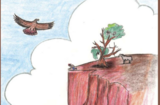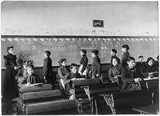Hip hop music is a staple of music lovers around the world. With its strong, rhythmic beat and lyrical rap vocal tracks, the genre that originated in New York City after the Civil Rights Movement has grown into one of the most popular styles of music in the world.
In this lesson, students will learn about hip hop as a tool for empowerment and critically analyze its place in American history as they read, analyze, and respond to film clips and lyrics from select songs. Through the discussion questions and activities, students will question the historical complexities and come up with their own interpretation of how music can be a tool for empowerment.
Students will answer questions before, during, and after watching the clips. Teachers may choose to have students create a social post/poem/rap about a social issue or create a presentation about a song with social justice themes. The lesson also allows students to explore other songs with social justice messages, across genres.
The activities in this lesson can be implemented across curricula, including, music, history, ELA, and non-academic classes (e.g., advisory).
More About This Resource
About the Authors:
This resource was developed by PBS Digital Innovator All Star Educators. The PBS Digital Innovator All Star program brings together a community of PreK-12th grade educators, who are hometown thought-leaders and classroom changemakers, for ongoing professional learning and growth. The program creates opportunities for participants to share strategies, learn from peers and leverage PBS platforms to elevate their own ideas and voice.
PBS Digital Innovator All Stars are characterized by their ability to seamlessly integrate media and digital technology into their learning environments, inspiring students to use media and emerging technologies in responsible, effective and empowering ways.
David Upegui is a Latino immigrant who found his way out of poverty through science. He currently serves as a science teacher at his alma mater, Central Falls High School (RI) and as an adjunct professor of Education. His personal philosophy and inclusive approach to science education have enabled students to become problem-solvers and innovative thinkers. He has a keen ability to engage students in learning, exploring, and contributing to science. He received the NABT’s Outstanding Biology Teacher Award (2021) and the Evolution Education Award (2014) as well as the Presidential Award for Excellence in Mathematics and Science Teaching in 2019 (2017 cohort). Upegui started, and runs, the school's Science Olympiad team and has contributed to several publications on science education and appropriate pedagogy. He completed his doctoral degree in education at the University of RI, focusing on science education and social justice.
Darnell Williams was born on the south-side of Chicago. As a child his family traveled to different parts of the United States during his father’s service in the Navy. Williams would go on and obtain his B.A in Childhood Studies of Psychology at Rutgers University- Camden. Soon after, Williams would become an English Language Arts teacher and Social Studies teacher. In 2020 Williams would have the honor of becoming a Digital Innovator and work on several projects. During this time, Williams would also obtain his Masters in Educational Leadership. Williams would be recognized for his educational leadership during the Covid-19 pandemic. He is currently the Supervisor of Pupil Services in Hamilton Township School District in Mays Landing, New Jersey. Williams in dedicated to serving staff and students in mental health and equity.
Sensitive: This resource contains material that may be sensitive for some students. Teachers should exercise discretion in evaluating whether this resource is suitable for their class.



